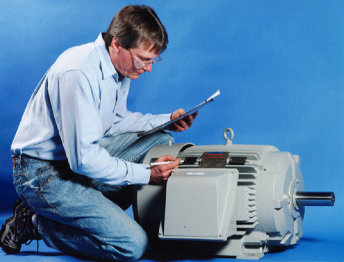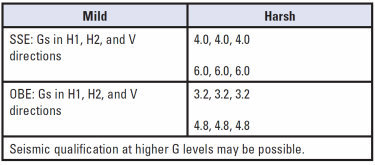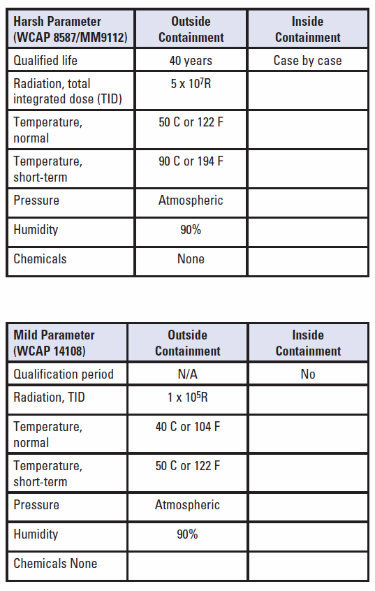Background
To maintain Class 1E qualification standards when replacing low-voltage motors, Westinghouse Nuclear Services offers a range of motors manufactured to original Westinghouse specifications and qualification standards for safety-related Class 1E applications in nuclear power plants.
In addition, engineering studies to support motor uprates or transient operation are possible utilizing the Westinghouse motor design program.

New safety-related, low-voltage motor
Description
Our low-voltage motors are built on National Electrical Manufacturers Association (NEMA) frames 143T through 449T and feature the Westinghouse-qualified Class H random-wound insulation system for use in harsh environments. Westinghouse is the only manufacturer that can provide a motor to the original MM9112 qualification. A qualified Class F random-wound insulation system is also available for mild environments. Both types of motors are certified to be electrically and mechanically interchangeable in fit, function and seismic/environmental qualification, and consistent with the Westinghouse motor originally supplied or a specified non-Westinghouse motor. Interchangeable low-voltage motors for both Services safety-related and non-safety-related applications are available and can be used as spares/replacements, or in a variety of new applications. Interchangeable low-voltage motors for nuclear non-safety-related applications are also available.
Services safety-related and non-safety-related applications are available and can be used as spares/replacements, or in a variety of new applications. Interchangeable low-voltage motors for nuclear non-safety-related applications are also available.
Interchangeability
To replace existing Westinghouse motors, certification is based upon a review of the existing motor design records. To replace non-Westinghouse motors, certification is based upon a review of the information supplied by the customer. Although minor changes in conduit box size, location and total weight may be required, Westinghouse will monitor situation so that environmental and seismic qualification equals or exceeds that of the originally supplied motor.
Testing
Westinghouse tests motors to the current standards defined in NEMA MG 1 and IEEE 112. Each safety-related motor has a complete test performed or is supplied with a copy of a duplicate design test.
Quality Assurance
All Westinghouse Class 1E low-voltage motors are furnished by Westinghouse rotating equipment services (RES), in accordance with the Westinghouse Quality Assurance Programs, meeting the requirements established by the U.S. Nuclear Regulatory Commission (NRC), including the requirements set forth in 10CFR50, Appendix B. Our motors can be qualified to operate in either harsh or mild environments, as required. RES-supplied motors also comply with 10CFR21 reporting requirements. For safety-related Class 1E applications, the motors are further qualified to accepted environmental and seismic standards.
Seismic Qualification
A motor is seismically qualified by using a standard static or a static coefficient analysis. If Westinghouse performed the original analysis, the seismic requirements originally supplied to Westinghouse will be met or exceeded. Westinghouse low-voltage motors are standardized on high acceleration levels that should envelop nearly all applicable seismic requirements. We use the following limits for motors up to frame 449T:

Environmental Qualification
Westinghouse low-voltage motors are qualified to the following typical environmental parameters, depending upon the environmental application:
